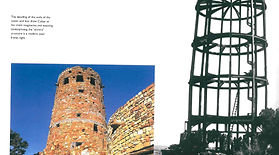Concrete Consulting Firm
Concrete Expert Witness Services
"Concrete Insights and Experience When You Need It"
BFI Building Forensics International
Concrete Consulting

BFI | Concrete Expert Witness | Concrete Slab Post Tensioned Tendon exposed at site investigation of parking structure

Concrete Crack through Aggregate

BFI specializies in Concrete Expert Witness Litigation and Support, Including Concrete Testing, Concrete Moisture Consulting and Petrographic Analysis.

BFI | Concrete Expert Witness | Concrete Slab Post Tensioned Tendon exposed at site investigation of parking structure
Concrete Petrographer, Concrete Petrographic Analysis, Concrete Petrographic Analysis of Concrete, Petrographic Consultant, Petrographic Analysis of Aggregates, Petrographer, concrete guy, concrete dude, BFI, BFI, BFI, BFI
Concrete Heritage
Cement is in Geoffrey Hichborn's blood. His grandfather, Donald Hichborn, and great-grandfather, Stanley Hichborn, owned and operated a concrete and engineering company in the early 1900s, during which time they worked with Fred Harvey Co. and the Atchison, Topeka & Santa Fe Railway to build tourist destinations in the Southwest. Their most noted structure is the Indian Watchtower at Desert View, designed by architect Mary Colter and built in 1932 at the Grand Canyon.
Professionally, he is a Fellow of the American Concrete Institute, serves on several committees and subcommittees of the American Society for Testing and Materials, and is presently national president of the Forensic Expert Witness Association. In some circles, Hichborn has been called a concrete detective for his investigative analysis of concrete defects and their causes, and for devising methods of debunking junk science in the courtroom. In one instance, he devised a procedure which demonstrated that plaintiffs' expert witnesses were unable to tell the difference between a Tums tablet and piece of concrete when presented with scanning electron microscope images of each of these substances. He helped devise a study that found the moisture dome test had no validity in providing evidence of sulfate attack on concrete. He also has designed and directed specialized tests and evaluations for the research and development of new products and for solving complex field problems.
While Hichborn is a graduate of the University of California and a licensed professional engineer, he especially admires people like his great-grandfather and those who preceded him, people who had no formal degrees or licenses, but possessed a great deal of engineering and materials knowledge and built bridges, mines, dams and other complex structures.
They were smart people that knew how to apply logic, wisdom, rationality and planning to a problem, Hichborn says. And, the problem was either the alignment of a railroad or a truss, or the excavation or shoring of a mine, or doing something through planning and analysis to devise a rational plan that would benefit mankind.
He pays homage to his predecessors through an extensive collection of historic photos, drawings, maps and equipment that have turned his office into a virtual museum. It includes 19th century photos of bridges, mines and trusses, any work that engineers are famous for. His most prized possession is a 200-year-old map of Capt. James Cook's voyages. I think those guys were brilliant, really special. "They had skills we don't have today in our specialized world", Hichborn says. "I have built a collection that honors them. I also honor them by striving to emulate their principles of logic and planning while going about the work I do each and every day."
Although the affinity for engineering and concrete construction skipped a generation, Hichborn's father, Hal, worked for IBM in the then-fledgling computer industry, today Hichborn is one of the nation's foremost experts in the forensic examination of concrete and related building products. A certified engineer, he is Chief Engineer for Building Forensics International where he currently oversees national and international concrete and cement investigations. He regularly serves as an expert witness for both defendants and plaintiffs in high-profile construction liability cases.

Donald Hichborn with Architect Mary Colter

The Indian Watchtower circa 1930

Donald Hichborn Supervising a Concrete Pour

Donald Hichborn at a surveying site.
